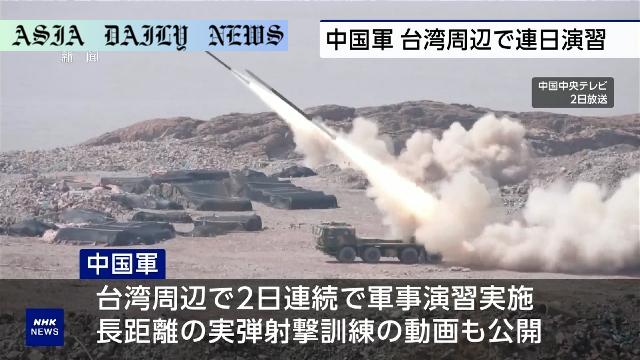Taiwan’s defense ministry reports on China’s aggressive drills targeting Taiwan Strait and East China Sea, testing long-range precision strikes.

China Showcases Rocket Launch Capabilities
China’s military has amplified tensions in the Taiwan Strait by conducting provocative drills and displaying its missile capabilities. The recent drill, dubbed ‘Strait Thunder 2025A,’ was strategically executed in the central and southern waters of the Taiwan Strait, highlighting China’s precision strike abilities. According to the Chinese military, the exercises were aimed at testing its naval blockade operations and operational efficiency in delivering precision missile strikes.
In an official statement, the Chinese forces elaborated that live-fire drills were held in the East China Sea. The state media footage appeared to showcase advanced multiple rocket launchers capable of targeting mainland Taiwan. Significantly, the maneuvers also sent an underlying political message to Taiwan and its leadership, as Beijing reinforced its position against what it perceived as pro-independence movements by Taiwan’s ruling party.
Tense Waters: Taiwan Monitors Chinese Forces
Taiwan’s defense ministry reported the sighting of 31 vessels, including destroyers, drones, and the mighty Shandong aircraft carrier, around its coastal waters. Air incursions were also noted, comprising unmanned aerial vehicles and fighter jets. While such military maneuvers aren’t unprecedented, the scale and message behind the latest drills have escalated concerns across the region.
China’s deployment of the Shandong aircraft carrier and coordinated naval-air drills offers insight into their military strategy. Beijing termed the Taiwan Strait the ‘island chain,’ referring to its critical vantage point protecting the mainland from foreign interventions, particularly from the United States. Taiwan, in turn, remains vigilant, affirming its resolve to closely monitor the incursion and defend its sovereignty.
Strategic Implications for Asia-Pacific Relations
The latest drills emphasize China’s increasing confidence in demonstrating its military prowess against Taiwan, further intensifying the already sensitive geopolitical dynamics in the Asia-Pacific. China’s maneuvers also signal its readiness to challenge U.S. presence in the region and mitigate alliances that bolster Taiwan’s defense capabilities.
On the opposite side, Taiwan continues to rely on advanced global alliances to maintain strategic equilibrium in the region. China’s aggressive tactics provoke regional instability and hinder prospects for peaceful discourse. Analysts anticipate that Taiwan may recalibrate its defense posture by bolstering missile defense systems, while neighboring countries closely monitor the developments for repercussions on the broader Indo-Pacific security framework.
Commentary
China’s Drills: A Stark Warning to Taiwan
China’s latest military maneuvers near the Taiwan Strait are yet another bold and elaborate display of its growing military strength. The showcase of long-range precision strikes, coupled with naval blockade simulations, not only underscores China’s capability but also its intent to pressure Taiwan’s leadership. These drills are a critical reminder of the fragile dynamics in this strategically vital region.
Regional Instability and Global Implications
From a broader perspective, Beijing’s increased military activity poses serious implications for the security of the Asia-Pacific region. Countries directly surrounding the Taiwan Strait, including Japan and the Philippines, are likely to re-evaluate their defense strategies amidst these escalations. Moreover, such incidents contribute to a climate of increasing mistrust across superpowers, exacerbating tensions with the U.S. and its allies.
A Time for Diplomatic Resolve
What remains clear is the critical need for dialogues that prioritize peaceful and progressive solutions. Both Taiwan and China stand to lose from potential conflicts, with severe impacts on global markets, trade, and humanitarian conditions. It is, therefore, the collective responsibility of involved nations—including the U.S. and other global stakeholders—to encourage cooperation and deter military escalations in the region.


